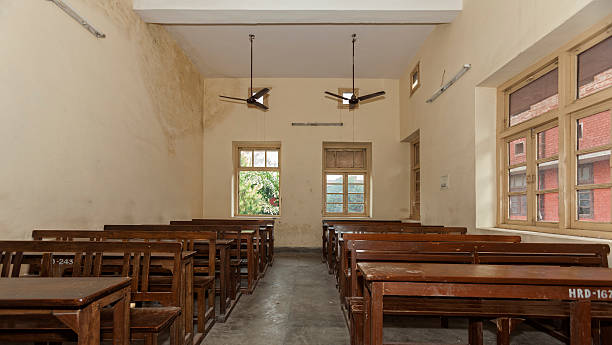Shillong, Feb 15: The Meghalaya government is considering a sweeping restructuring of its school system by clustering institutions to enhance administrative efficiency and optimize resources. With over 14,500 schools spread across the state, officials believe consolidation will not only eliminate redundancies but also improve academic outcomes.
A key review meeting chaired by Vijay Mantri, Commissioner and Secretary of the Education Department, on Friday, placed school consolidation at the forefront of policy discussions. The move aims to address the fragmented nature of the current system, where multiple sections of the same institution operate as separate schools due to administrative classifications.
Speaking to the media, Director of School Education & Literacy Swapnil Tembe underscored the inefficiencies stemming from the existing structure. “In many areas, a single institution functions as four separate schools—Lower Primary, Upper Primary, Secondary, and Higher Secondary—each assigned a unique UDISE code because of different funding schemes. In reality, they operate as one school but are managed as distinct entities,” Tembe explained.
The issue has also drawn the attention of Meghalaya Chief Minister Conrad K. Sangma, who has emphasized the need for rationalizing school structures to ensure better governance.
According to the 2011 Census, Meghalaya has a population of 29.66 lakh and accommodates 55,160 teachers across 14,582 schools. With 7,783 government schools and 4,172 government-aided institutions, including ad-hoc and deficit schools, the state has the highest concentration of government schools in the Northeast.

“Given our relatively small population, the high number of schools is unsustainable. The National Education Policy (NEP) 2020 advocates for composite schools, which integrate education from pre-primary to Class 12 under one institution. This model will provide continuity for students, reducing disruptions in their learning journey,” Tembe added.
Currently, students in Meghalaya often change schools multiple times—transitioning from Lower Primary to Upper Primary, then to Secondary and Higher Secondary—sometimes across considerable distances.
“On average, a student in Meghalaya changes schools four times in their academic journey. This fragmentation contributes to dropout rates. Clustering schools will create a more stable and nurturing learning environment,” Tembe noted.
The Education Department has now directed officials to conduct field inspections to identify schools that can be merged. A detailed report is expected soon, setting the stage for an overhaul of Meghalaya’s education system.
Read: Govt to appoint administrator to ensure closure of CMJ University operations
WATCH:
Find latest news from every corner of Northeast India at hubnetwork.in, your online source for breaking news, video coverage.
Also, Follow us on-
Twitter-twitter.com/nemediahub
Youtube channel- www.youtube.com/@NortheastMediaHub2020
Instagram- www.instagram.com/ne_media_hub
Download our app from playstore – Northeast Media Hub





